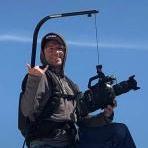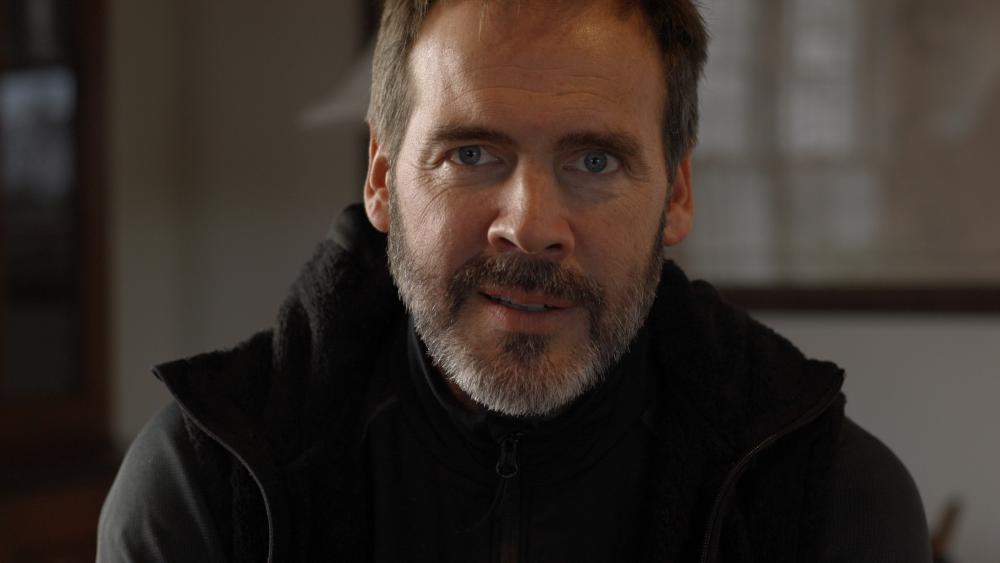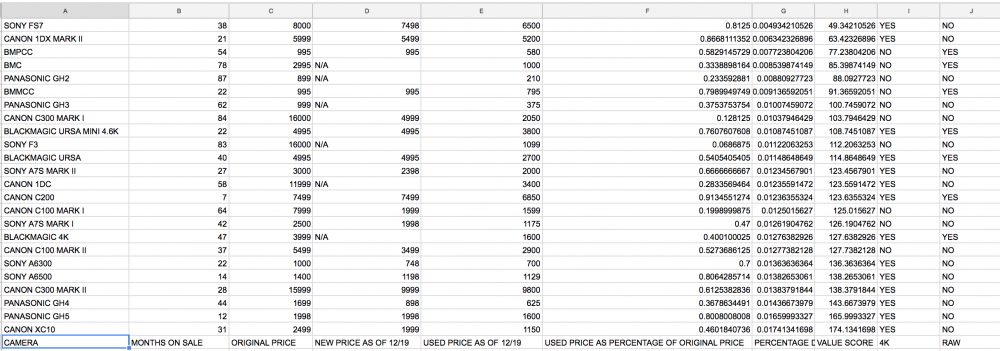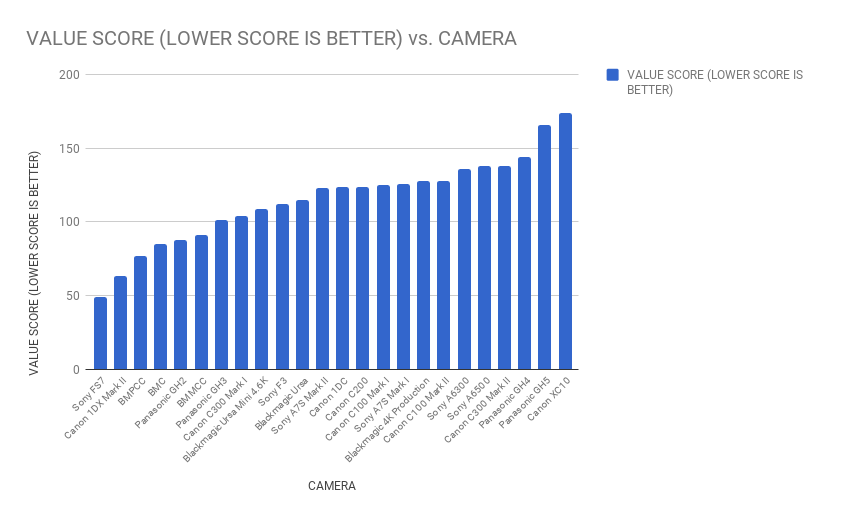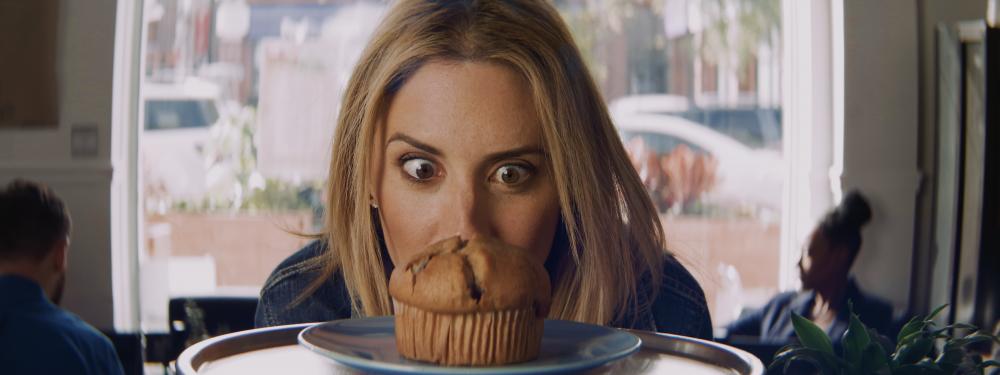Leaderboard
Popular Content
Showing content with the highest reputation on 12/22/2017 in all areas
-
PLEASE, HELP!!!!
deezid and 3 others reacted to scotchtape for a topic
Free reshoot out of your pocket if you want to keep your rep. Mistakes happen, and sometimes you have to pay for them.4 points -
4 points
-

X-Pro2 Ver.4.00 4K video firmware released
karin and 2 others reacted to Andrew - EOSHD for a topic
Just tried it out for the first time It's fucking good. Looks more like A6500 than X-T2 No crop either. Super fine noise grain.3 points -
X-Pro2 Ver.4.00 4K video firmware released
deezid and one other reacted to Aussie Ash for a topic
X-Pro2 has been available for nearly two years and now gets a major firmware update. Gives 4K video,faster AF tracking on moving subject and support for tether shooting-available- http://www.fujifilm.com/products/digital_cameras/x/fujifilm_x_pro2/features/page_08.html2 points -
PLEASE, HELP!!!!
EthanAlexander and one other reacted to elgabogomez for a topic
Any chance you also recorded on camera? The info shows you had sd card in with space. You might have to use the internal recording (if it exists).2 points -
Ive done tests and have found when it comes to baked in profiles the 5DIV actually appears to have better IQ than 1DC. I should do a real review/test and see. I haven't tested the 5DIV Canon Log yet. Im sure its great2 points
-
Kinefinity Terra 4k has landed
Raafi Rivero and one other reacted to salim for a topic
this is so good that makes me cry2 points -

Kinefinity Terra 4k has landed
Raafi Rivero and one other reacted to andrgl for a topic
Not a chanse. ;)2 points -
Panasonic seems to be announcing something "BIG" on December 15
webrunner5 and one other reacted to Garrett S for a topic
Hopefully. Honestly, I'd be beyond happy and would pay several thousand dollars if a company just took the guts of the BM Micro Cinema Camera and put them into a more useable form, like a GHX or XC10 or even a C100 body. I don't need or want 4K, but I do want ProRes (for client projects) and raw (for learning and passion projects) and thirteen stops of latitude. I also want a flip out screen and decent battery life. I think even in the age of 4K, an ergonomic and efficient 1080 60p raw shooting camera with built in ND filters and usable audio would sell like crazy. I think the push by consumers and manufacturers to move to 4K before really pushing the limits of dynamic range and color science was a mistake. Of course, if you have enough money for storage, media, and processing power, you can have 4K, great color, and raw/ProRes, but for most it's not yet realistic.2 points -
We all know that cameras are terrible investments. They instantly lose value when you open them and they’re no longer new-in-box, and then they steadily lose value over time. It really only makes sense to think of a camera as an investment if you’re a business buying a camera that will directly impact your ability to get work or if you’re a collector selling rare antiques. Otherwise, you can only plan on losing money on whatever camera that you buy. Buying a camera and expecting it to increase in value is usually really silly. At the same time though, cameras lose values at different rates. Some cameras command used rates very near their launch prices, and other cameras sell for way less than their initial price a year after launch. Importantly though, I think the value of a camera over time can show how forward-looking the company that launched the camera was with that model when it released it. A camera released in 2014 that’s still relevant right now had valuable features in 2014, but is also is still competitive in some way in 2017 (or 2018). I’m thinking that the forward-looking value of a camera can be calculated based on a few points of data: first, how long the camera has been on the market; second, how much the camera cost when it was initially released; and third, how much the camera is selling for used today. In short, I think the difference between what a camera sold for when it was released and what you can buy it for used today can show how competitive the camera is relative to other cameras. So, what I did was to search out data for some of the most commonly used cameras for video and analyze how old they are, how much they sold for when first released, and how much they sell for now. The short version is that I made a Google Sheet and compared the values of cameras over time to see which cameras held their values best over the months they’ve been on the market. The long of it is this: I made ten columns in a Google Sheet. The first column identifies the camera. I chose cameras that are most discussed on the blogs that I frequent, like this one, but I purposely excluded cameras that are also super popular in photography, like the 5D Mark II and III. Their used online value might be less attached to their video functions than others here. The second column is the number of months the camera has been on sale. I used the actual “the camera is available on B&H” date whenever possible. For cameras where the announcement date and the sale date weren’t hugely different, I didn’t make a distinction. For cameras (like some Blackmagic cameras) that were announced and didn’t go on sale until months later, I used the actual “available for sale” date when I could find it. I rounded to the nearest month. The third column is the original price that the camera sold for. The fourth column is the new price as of 12/19/17 (this is mostly for my curiosity and doesn't actually figure into any of the calculations). The fifth column is the used price as of 12/19/17-12/20/17. I used the lowest “Buy-It-Now” price from eBay (US) I could find for each camera, but I only accepted cameras that I would actually purchase (if I was looking for one) based on their being used but totally functional and coming from buyers with decent feedback. The sixth column is the used price as a percentage of the initial new price. For example, a camera that debuted for $2,000 and now sells for $1,000 is selling for 50% of its initial price. The seventh column is the percentage of value lost divided by the number of months the camera has been on the market. I found the percentage of value lost by subtracting the percentage of the new price that the camera sells for used from one. The eighth column is the tiny percentage from the seventh column multiplied by 10,000 to make it more readable. I’m basically creating a “value score,” where the lowest number is the camera that has retained its value the best. The ninth and tenth columns are whether the camera shoots in 4K or raw, respectively, because I wondered whether that would make an obvious difference. This is a graph with each camera’s “value score” (the percentage drop per month multiplied by 10,000), rounded to the nearest one. Essentially, the lower the score, the less value the camera has lost over time, or in other words, the better it’s retained its value relative to the number of months it’s been on the market. Here’s all the original data. So, basically the FS7 has lost very little of its value over time, while the Canon XC10 has lost a ton of its value over time. Most cameras fall in the middle range. Interestingly, every major company has a camera in the top five, and every major company also has a camera in the bottom five. Interestingly, 1080p and 2.5K cameras do pretty well by these calculations. The BMPCC, BMC, Panasonic GH2, BMMCC, and GH3 have all held their value relatively well, while a lot of 4K cameras have lost value relatively quickly. I wondered whether raw shooting cameras would do better, but I don’t think there’s a strong correlation. I’m sure there’s some complex relationship between resolution, codec strength, lowlight ability, sensor size, marketing, and a million other factors, but I don’t know what it is. Interestingly, it’s also possible that the most popular cameras sell for lower prices relative to their new prices because so many people have bought them and used supply is high when those customers decide to move on to new cameras. However each camera has maintained its value, I think the cameras with low scores were (are) futuristic in some way. They have to be to still be relevant today, or to have still been relevant so recently (in the case of the GH2). There’s a lot of limitations to my analysis. It’s mostly for fun and to drive discussion. First, the eBay prices are a tiny sample over two days. I’ve seen cameras go for a lot lower than the prices listed here. I saw a BMMCC go for $550 a few days ago, but when I actually did the analysis the lowest price I could find was $800. That’s a substantial change, but I wanted to take all the prices from one window of time. Second, I don’t think eBay is (usually) actually the lowest price source for buying a camera used. The cheapest BMPCC I could find is $580, but there’s one on BMCUser now that’s less and comes with a cage. I’m totally open too to the fact that my math might be less than perfect. I’m not a statistician. I’m just a camera nerd with love for data. Please feel free to point out how I could make it better or if it’s all not valid at all. Or, please let me know if I’ve missed major dates, miscalculated months, or mistook the initial price. I threw this together pretty quickly out of curiosity and can fix it. I’m not picking on any particular camera. I’ve almost bought an XC10 a few times. At the end of the day, whatever camera you buy needs to fit your needs, and the idea that it might retain value isn’t really important if it’s meeting those needs. But, some cameras hit the market and are so cutting edge that they hang on for years. My goal was to look backward with data to see which cameras those were.1 point
-
I always keep coming back to this comparison of 2 Medium Format, and a 50mp Canon DSLR versus a Quattro DP2 and well guess what, no matter where you move that target to the Sigma wins every time. It is an amazing camera. You have to substitute the Sigma DP2 for one of the cameras listed there and just move it around to different targets on the test. I got rid of the Nikon D850 but.. https://***URL removed***/reviews/nikon-d850/81 point
-

PLEASE, HELP!!!!
EthanAlexander reacted to JordanWright for a topic
The display information has been transmitted in to the atomos, there is a option in the gh5 menus to disable information through HDMI1 point -

PLEASE, HELP!!!!
maxotics reacted to Don Kotlos for a topic
I think that is a good lesson for everyone to look at the footage (and listen the audio!) before calling a wrap.1 point -
If a re-shoot is at all possible, this is a really good idea1 point
-

Sony A7R III announced with 4K HDR
Dave Maze reacted to Don Kotlos for a topic
I think most of us are holding off the a7r3 for the soon arriving a7s3.1 point -
Yes. REALLY REALLY COOL!! I need to test 1080p 60fps too. Idk if it'll be the same. Should it be?1 point
-

Sony A7R III announced with 4K HDR
kaylee reacted to Don Kotlos for a topic
So in 1080p it is practically close to a global shutter. That is the same speed as the A9 has in electronic shutter mode: http://www.imaging-resource.com/news/2017/08/22/a-new-test-debuts-at-ir-the-sony-a9-rolling-shutter-is-pretty-minimal1 point -

GH5 to Alexa Conversion
AaronChicago reacted to Sage for a topic
Exactly, and more saturation. Soft is the lower saturation base. They have the LogC conversion at their core. Part of what Arri's 709 does is increase saturation in a film-like way. So - if a film conversion is accurate - it should do the same for LogC1 point -

G85 my next step?
Cinegain reacted to webrunner5 for a topic
Heck a Panny G7 is better than a GH4 for colors, and a few other goodies let alone a G85 being a Lot better with IBIS helping a ton alone just for that reason and even better colors etc... Now they don't have all the Anamorphic stuff etc, that a GH4 has but most people only use 40% of what a GH4 had to offer anyways. Things have moved forward surprisingly fast over at Panasonic Land!1 point -

2016 vs 2017 MacBook Pro for Resolve?
EthanAlexander reacted to Don Kotlos for a topic
Well, after reading a bit more on this you are right. It's funny how most sites refer to the newer models as non-upgradable, but in reality, the SSD is not soldered and most of them propagate the wrong info (myself included, and I even have one of these damn things). Now how wise it is, I am not sure Here is the only vendor I found for those custom made PCI-E SSDs: https://beetstech.com/product/solid-state-drive-a1708?gclid=CjwKCAiA1O3RBRBHEiwAq5fD_C7YrlEL44i9gw1SsVrMs0HkbtQ6R_XNweVL7BbKBhwSIqbf-s9N-RoC_2AQAvD_BwE Personally, for the same price (~$1000), I have raided 2 2TB 2.5" SSDs with the Mercury Elite Pro Dual mini. I get ~850MB/s with 4TB and I can connect it to any computer...1 point -

2016 vs 2017 MacBook Pro for Resolve?
Don Kotlos reacted to EthanAlexander for a topic
This is not true! Sorry, Don you're very knowledgeable but I want to clear this up: SSD can be swapped. Therefore I would definitely get the newer Kaby Lake.1 point -
Panasonic seems to be announcing something "BIG" on December 15
webrunner5 reacted to mercer for a topic
Dual Pixel Auto Focus and Phase Detection Auto Focus are identical?1 point -

GH5 to Alexa Conversion
Ricardo Constantino reacted to AaronChicago for a topic
1 point -

Panasonic GH5 - all is revealed!
webrunner5 reacted to midloch for a topic
To me is GH5 the most capable camera to very extreme conditions. I have just spent 10 days in peruvian amazon rainforest and the humidity and muddy conditions were hard. I shot V-log 10bit 24p and the results seems to me very good (filmic :-D) as you can see on this very short trailer to movie about expedition to Matses tribe:1 point -

Canon 1DC vs Canon 5D Mark IV
webrunner5 reacted to Dave Maze for a topic
I can confirm that 5d iv 4k is almost identical to the 1dx ii and 1dc 4k. Just have that heavy crop1 point -

Panasonic seems to be announcing something "BIG" on December 15
Kisaha reacted to webrunner5 for a topic
Your last statement is probably correct. I don't know about cheap down the road. Well yeah it will be amazing tech. But as we see now already even lower end compnay's like Panasonic, Olympus, heck even Blackmagic are pushing up the price for cameras we would like to have in this last cycle. I really don't want to be paying 4000 bucks for a Panny or Sony mirrorless to be honest I don't care what it can do. Unless you are making a good living shooting 2 thousand bucks is about all a person can do, and with all the other stuff you need on top of it that is probably most peoples limit or more. It is pretty amazing what you can do with a iPhone let alone say a used Panny G7 or something like it. So I am not complaining, but this new trend Olympus started by going to 2000 bucks Ain't to my liking as they say.1 point -
In a studio environment, where size/weight isn't a real concern, a Nikon D8XX will be faster and more flexible than the Sigma. Because the Sigma camera doesn't have a bayer CFA, but samples colors vertically, it can deliver as clean an image, color-wise, as the best Bayer cameras IMHO. However, the color RED is sampled last in the sensor (bottom layer), so it loses some nuance. Shouldn't be a problem in a studio environment, but you have to light correctly. Also, these sensors have only 6 stops of DR. That's MY opinion, many will say that incorrect. But I throw it out there for you. It does NOT detract from the camera for me, that's all I need, but it's something you should know if you're not exact with your exposure. To use a baseball analogy, these cameras either strike out or hit home runs. Base-hits aren't their thing. These cameras excel in any image where a bayer sensor can be confused by thin strips of light or dark, like a person's hair in the sun. The bayer sensor will miss color information and create color artifacts. For example, a strand may only hit the red and green pixel, creating a reddish little blotch after de-bayering (but you'd need to pixel peep). The Sigmas don't succumb to this. So outside, with a strong backlight, the Dp3 can take a portrait that exceeds what any Bayer sensor camera can do--in a very small package. In short, if you need to travel light, can work slow, and want to do some portraits outside, and you have good light, the Dp3 can deliver shots that will bring tears of joy to your eye. Also the images do have a different look. This is a fact, if they were as fast and sensitive as bayer sensors no one would use anything else. I recommend that every serious photography try these cameras out. So I recommend doing what Mattias did. I'd certainly LOVE to see some portraits done with the camera. One my list of things to do one day too. (I had a dp2q).1 point
-

Canon 1DC vs Canon 5D Mark IV
Dunjoye reacted to Ollywood88 for a topic
Guys, Love this @dunjoye I shot this with The Canon C500 IN 1080p and the Canon 1DC. It is such a special camera. I was also looking at selling for the 4k 60p auto focus of the Canon 1DX 2. If the 1DX 2 just had that lovely super 35mm mode I would be gone. Still love my 1DC.1 point -

Veydra Mini Primes vs. SLR Magic Hyperprimes for MFT
webrunner5 reacted to John Brawley for a topic
SLR Magic are legit. I've been buying for them for many years and I have many of their lenses. They are Hong Kong based and they've never been great at marketing. But you can order them with confidence and they're now available from big box retailers like B&H. You can also contact them directly and they'll generally get back to you. The hyperprimes are indeed their stills lenses "cinevised", so de-clicked etc. If you want PL, then they make their own VERY nice APO primes. I recently shot this and am finding few people can pick the SLR Magics from the Panavision Primos and Zeiss CP2's that they're being compared to. JB1 point -
1 point
-
Lol Seriously? I hate buying let's say an A7SII right now when we know the III is around the corner. But not buying a camera 2 weeks after release because the next one is coming 2 years after? You will never buy, cause the V is coming 2 years after the IV and so on.1 point

